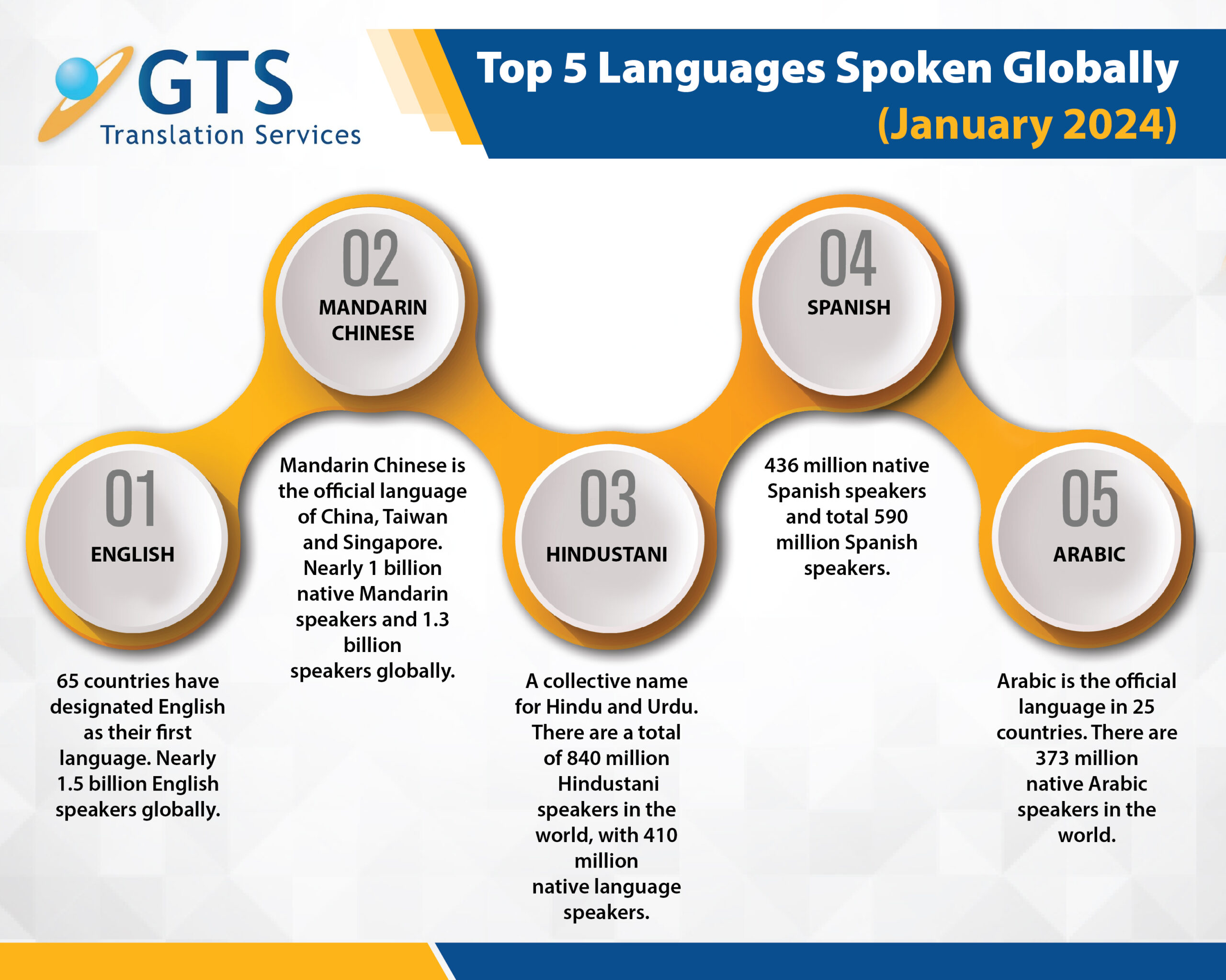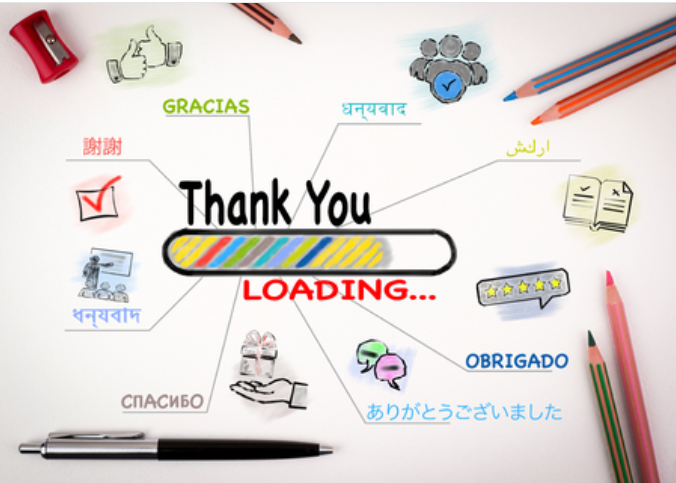These are the five most common languages spoken globally. Although it is impossible to know the exact number of speakers, thanks to constant secondary foreign language studies and the ongoing growth of varying cultures, this is a very solid estimate based on population statistics.

Although most people are familiar with only a few languages, there are actually over 7,000 languages used throughout the world. Of these, around 2,000 languages have less than a thousand native speakers. But what about the rest of them? Among the 4,500 languages around the globe that have more than a thousand native speakers, which are the most widely used?
The answer can be provided in one of two ways. The totals can either be found by the number of native language speakers, or by the total number of people who speak the language at a proficient level. For the purposes of this article, the most common global languages will be chosen by total number of proficient speakers and not just native language speakers.
1. English
 English is not only the most commonly spoken language globally, it is the language most used for international business. It is often referred to as the “international language.” An incredible 65 countries have designated English as their first language. Just a few of them include the United Kingdom, Ireland, Jamaica, Australia, New Zealand, and several African countries. Globally, there are nearly 1.5 billion English speakers, with only 380 million of them calling the language their native tongue.
English is not only the most commonly spoken language globally, it is the language most used for international business. It is often referred to as the “international language.” An incredible 65 countries have designated English as their first language. Just a few of them include the United Kingdom, Ireland, Jamaica, Australia, New Zealand, and several African countries. Globally, there are nearly 1.5 billion English speakers, with only 380 million of them calling the language their native tongue.
2. Mandarin Chinese
Mandarin Chinese is the official language of China, Taiwan, and Singapore. There are approximately 1.3 billion speakers globally, with close to 1 billion of them calling Mandarin Chinese their native tongue. The importance of this language is reflected in its significant role in international business, diplomacy, and cultural exchange. Mandarin’s complexity, with its tonal nature and thousands of characters, presents a unique learning challenge and richness, contributing to its cultural significance. Additionally, Mandarin’s influence extends into the realms of literature, cinema, and art, making it a vital component of global communication and understanding.
3. Hindustani
The word “Hindustani” isn’t actually a language itself, but a collective name for both Hindu and Urdu. These are two distinct but similar dialects of the same language, with the primary difference between the two being their writing systems. There are a total of 840 million Hindustani speakers in the world today, with 410 million of them calling it their mother tongue. The language is prominently spoken through north and central India, and is the official government language of India.
4. Spanish
Spanish is spoken widely throughout the world, especially in countries located throughout South American and Central America. It is also spoken in the Caribbean, one country in Africa (Equatorial Guinea), and in a few areas in the southeastern portion of Asia. Mexico is the largest Spanish speaking country in the world, but is surprisingly followed by the United States (home to over 40 million native Spanish speakers). Worldwide, there are 485 million native Spanish speakers, which create a large portion of the total 590 million people who speak the language capably.
5. Arabic
Arabic is the official language of 25 countries, mostly found throughout the Arabian peninsula, northern Africa, and the Middle East. Among the 25 countries where Arabic is an official language are Egypt, Israel, Iraq, Morocco, Jordan, Palestine, and the United Arab Emirates. There are about 373 million native speakers of Arabic.
6 to 10
A number of other languages also have large speaking populations, with Bengali, Russian, Portuguese, Japanese and Punjabi rounding out the top ten.
About the Author

Chelsea Falin is a dedicated professional with 10+ years experience working as a freelance writer, and 5+ years as a freelance marketer. Studied at ASU for Bachelors in English with minor in Media Analysis, and obtained certification in inbound and content marketing via HubSpot Academy. Experience in multiple forms of digital content.





